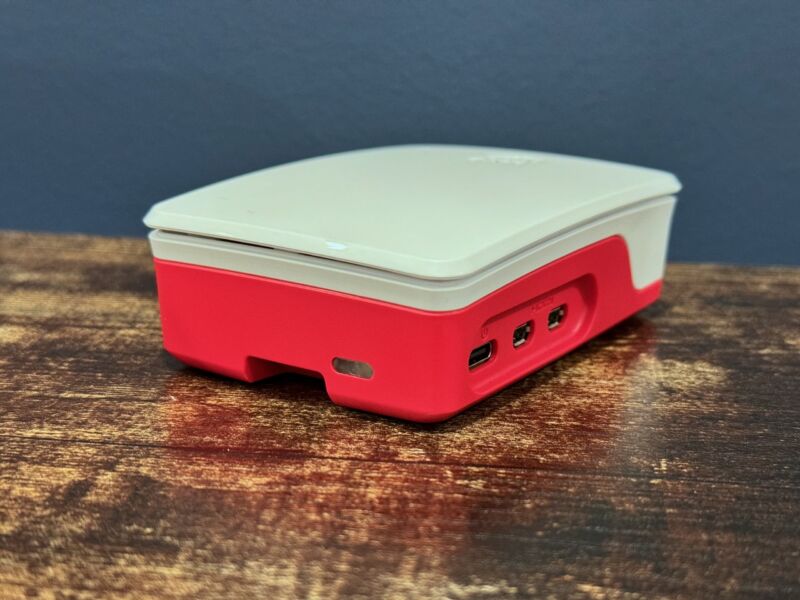
Enlarge / The Raspberry Pi 5 inside its official case. (credit: Andrew Cunningham)
I bought an 8GB Raspberry Pi 5 as soon as they went up for preorder, just like I have bought every full-size Pi model since the Pi 3 Model B launched back in 2016, including the Pi 3B+, with its better Wi-Fi and more efficient chip, and the Pi 4, with its substantial performance and RAM boost.
The difference is that I didn't really have anything in mind for the Pi 5 when I bought it. But years of Pi shortages made me worried about its scarcity, and I figured I'd buy first and ask questions later rather than want it later and be totally unable to get one. In the end, it will probably knock each of my other Pis down a level in my tech setup: the Pi 5 becomes the retro emulation box, the Pi 4 becomes the multi-use always-on light-duty server (currently running a combo of HomeBridge, WireGuard, and a dynamic DNS IP address updater), the Pi 3B+ joins the Pi 3B as either "test hardware for small one-off projects" or "the retro emulation box I lent to a friend which may or may not have been ruined when their basement flooded."
Before I did that, though, I wanted to take another crack at trying to use a Pi as an everyday general-purpose desktop computer. The Raspberry Pi's operating system has always included many of the tools you'd need to take a crack at this, including a lightweight desktop environment and a couple of web browser options, and the Pi 4-based Pi 400 variant has always been pitched specifically as a general-purpose computer.
Read 35 remaining paragraphs | Comments
